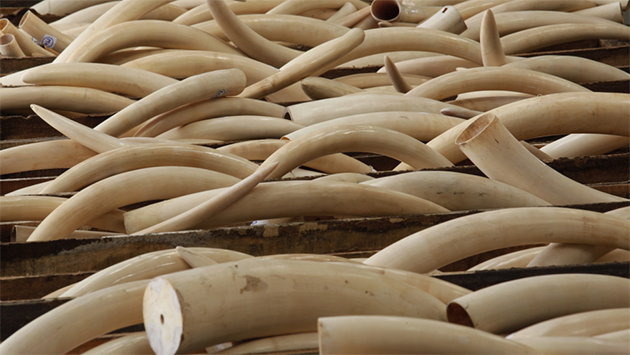Books behind bars: Uniform is orange, headmaster is an inmate, and the school is a prison

Sikhumbuzo Moyo, [email protected]
Inside the high walls of Khami Maximum Prison, a profound transformation is taking place. Through education and skills development, inmates are finding new paths towards personal growth, empowerment, and redemption. Far from being a place of despair, the penitentiary offers hope for a better future to most of its inmates.
Located just 25 kilometres west of Bulawayo, the prison — which houses prisoners sentenced to a minimum of seven years to life imprisonment, according to the Officer in Charge of the correctional centre, Chief Superintended Joe Matyavira, is transforming lives of many prisoners as it prepares them for life after prison.
The imposing prison walls and the foreboding entrance gate lend credence to the fearsome reputation of Khami Maximum Prison. However, as the saying goes, “what you see outside is not what you get inside,” inside the walls there is a community of men and women committed to changing the lives of inmates by offering life-changing skills which become useful on leaving prison. Contrary to popular belief, life within Khami Maximum Prison is not a dead end but instead it transforms individuals through empowering them with skills.
At the heart of this transformation lies the institution’s educational programme, which is not only offered to inmates but is also run by them.
The programme encompasses primary education from Grade 1 to 7, secondary education from Form 1 to 4 and even tertiary education. Among the skills offered are courses in motor mechanics.
The school has 327 students made up of 283 inmates and 40 from the local communities. The staff complement of 40 teachers including the headmaster, are all serving inmates.
During a visit to Khami Maximum Prison School, accompanied by Garainashe Moyo, the Zimbabwe Prisons and Correctional Services (ZPCS) Provincial spokesperson, we had the opportunity to speak with teachers, students and the 56-year-old headmaster, Masala Mathe, who is serving an 11-year sentence for rape. Mathe succeeded Khulekani Tshidzanani, a beneficiary of Presidential Amnesty, who had achieved a remarkable 100 percent pass rate in the Ordinary Level examinations during his tenure. One notable aspect of the educational programme is its accessibility. Inmates do not pay anything while external students pay a nominal monthly fee of US$3 which goes towards purchasing school materials. The only fee that inmates pay is the examination fee to the Zimbabwe School Examinations Council (Zimsec).

Khami Maximum Prison School external students headmaster Shadreck Katsholo (raised hand) with members of staff and Form Two student, 36-year-old Zandile Ndou (far right)
Moses Moyo, a graduate of the school who is now one of the teachers, was arrested in 2006 at the age of 22 for three counts of unlawful entry and robbery as well as seven counts of unlawful entry. He was sentenced to 59 years in prison and 10 years were suspended on condition of good behaviour.
“I came here with four Ordinary Level subjects. After my incarceration, I received encouragement from prison officials to continue my education. In 2010 I wrote Mathematics and Accounts and passed both”.
He said he then did Accounting, Economics and Business Studies at A- level and passed with 10 points.
“Never in my wildest dreams did I imagine that while in prison, the same system that removed me from society would provide opportunities for me to correct my wrongs and change for the better,” said Moyo.
He said he believed what he obtained in prison will eventually benefit society when he is released.
Moyo teaches a class of eight internal students and 44 external students utilising his new-found skills.

Moses Moyo
The headmaster, Masala Mathe (56), describes his role as hectic but enjoyable. It involves overseeing the teachers’ schedules and ensuring they are adequately prepared before he attends his own class. Mathe commends the rehabilitation system at Khami Maximum Prison, emphasising that life behind the prison walls is not devoid of hope.
Morgan Muchandisiyi, a 36-year-old teacher at the institution, echoes the sentiments shared by his fellow educators. Serving a 19-year sentence for rape and indecent assault, he passed his O-level exams in 2017. He has nine points at A-level.
“These achievements, especially within the confines of a prison were beyond my imagination,” Muchandisiyi admits.
While acknowledging the scary stories surrounding prisons, he says there has been a significant shift from the past when inmates were treated like animals.
“Despite being a prisoner, I am contributing to society as we have external students here. As President Mnangagwa often says, ‘Ilizwe lakhiwa ngabaninilo/Nyika inovakwa nevene vayo,’ and that is precisely what Khami Prison is accomplishing through this programme,” Muchandisiyi proudly says.
Dominic Nkosiyami Sibanda, a 29-year-old serving a 19-year sentence for rape and indecent assault, also emphasises the transformative impact of the prison’s rehabilitation programme. A former teacher at a school in Matabeleland North, Sibanda believes that the programme has the power to positively change the lives of serving and former inmates.
Bongani Mpofu, the Chief Correctional Officer at Khami Maximum Prison says the institution is committed to addressing knowledge and skills gap of inmates so that they become better citizens when they leave prison. — @skhumoyo2000












Comments